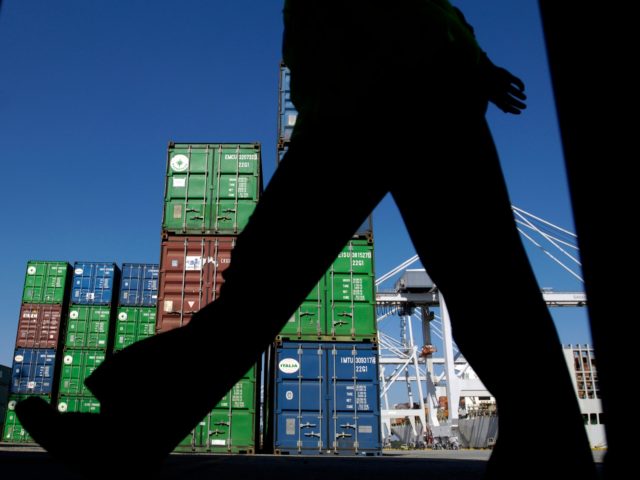Eighty thousand shipping containers are stuck at the Port of Savannah – a full 50 percent more than normal, the New York Times reported Sunday.
Steal containers are just awaiting either trucks or carry them to warehouses or ships to take them to another port, the Times reported. But like Savannah, other ports are also full. As a result, “some 700 containers have been left at the port, on the banks of the Savannah River, by their owners for a month or more.”
Yet Cushman & Wakefield, a real estate company, told the Financial Times demand for warehouse space is at an all-time high with scarce availability. Prices to store shipping containers also stand at an all-time high, according to Logistics Managers’ Index.
Executive Director of the Georgia Ports Authority, Griff Lunch, told the New York publication the Port of Savannah has never been this full before. “We’ve never had the yard as full as this,” he said, pointing to the containers that have been sitting in port because companies have nowhere to go with them.
“They’re not coming to get their freight,” said Lynch. “The stress level has never been higher.”
Due to the jam, Lynch said he has forced cargo ships to wait to dock for nine days. He said the backlog of ships was more than 20 waiting in line and anchored 17 miles off the coast. “The supply chain is overwhelmed and inundated,” Lynch said. “It’s not sustainable at this point. Everything is out of whack.”
Lynch also said if he had more berths to unload the ships, it would not help the congestion because he has nowhere to place the containers. “If there’s no space out here,” he said, looking at the full port, “it doesn’t matter if I have 50 berths.”
“Six or seven weeks later, the ships come in all at once,” Lynch explained about the bottleneck. “That doesn’t help.” According to Sea-Intelligence, “nearly 13 percent of the world’s cargo shipping capacity tied up by delays,” the Times reports.
Meanwhile, in August, inflation increased 5.3 percent compared to 2020. The inflation increase is primarily due to supply-chain issues, which means items are not easily passing through ports along their way to consumers. The New York Post reported October 7 there were “70 cargo ships waiting to dock at the Port of Los Angeles.”
Another challenge for the ports have been a truck driver shortage. Without drivers, many of the items American families depend on remain undelivered to points of purchase.
The situation has been also been compounded by Democrat-controlled states paying people not to work through large unemployment checks. These checks are in addition to federal government unemployment checks, which results in reducing the supply of labor.
Follow Wendell Husebø on Twitter @WendellHusebø

COMMENTS
Please let us know if you're having issues with commenting.